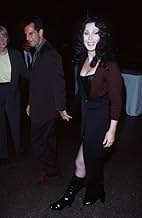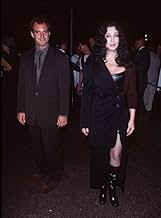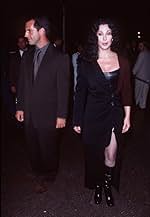ÉVALUATION IMDb
6,9/10
5,2 k
MA NOTE
Ajouter une intrigue dans votre langueThe movie examines the abortion issue through three stories set in different eras: 1952, 1974 and 1996.The movie examines the abortion issue through three stories set in different eras: 1952, 1974 and 1996.The movie examines the abortion issue through three stories set in different eras: 1952, 1974 and 1996.
- Nommé pour 4 prix Primetime Emmy
- 4 victoires et 15 nominations au total
Bob Shuttleworth
- Hospital Visitor (segment "1952")
- (as Bob Shuttlesworth)
Histoire
Le saviez-vous
- AnecdotesHolds the record as HBO's highest-rated original movie.
- GaffesIn the 1974 segment, one of the kids mentions wanting to watch The Partridge Family (1970), which at that time, aired on Saturday night. However, the kids had been to school that day so it was not a Saturday.
- Citations
Patti (segment "1996"): You get this abortion and I swear to you, you are on your own.
- Autres versionsThe UK video version was cut by 3 secs to reduce multiple gunshots during the hospital shooting scene.
- Bandes originalesCrazy
Written and Performed by Seal
Commentaire en vedette
All three of these short films are good, but the first is outstanding, largely because Demi Moore, whose performances I've otherwise never particularly liked, is so excellent. The point that she and Savoca convey - powerfully - is the sheer isolation, 50 years ago, of women who faced unwanted pregnancies. Moore spends most of the film, it seems, sitting alone in an empty house. Otherwise, she's enduring the company of her late husband's family, who see her only as their boy's widow, not as a human being. It's a frightening story that exerts a very strong empathetic pull.
The dialog is spare; Savoca relies on Moore's face and body language to convey her terror, aloneness and feeling that things are closing in on her. There's very little "emoting" here, which makes Moore's character all the more forceful. The result is an exemplary piece of film acting.
Of course, how much do we need in the way of tears and histrionics when we can see Moore attempting the old knitting needle cure, and later dealing with the aftereffects of a ghastly kitchen-table operation? This country's abortion laws created - and maintain effectively, in many places - a sort of hell for pregnant women. Thanks to this film, we can really understand a bit of what it was - and is - like.
The dialog is spare; Savoca relies on Moore's face and body language to convey her terror, aloneness and feeling that things are closing in on her. There's very little "emoting" here, which makes Moore's character all the more forceful. The result is an exemplary piece of film acting.
Of course, how much do we need in the way of tears and histrionics when we can see Moore attempting the old knitting needle cure, and later dealing with the aftereffects of a ghastly kitchen-table operation? This country's abortion laws created - and maintain effectively, in many places - a sort of hell for pregnant women. Thanks to this film, we can really understand a bit of what it was - and is - like.
- laursene
- 12 janv. 2004
- Lien permanent
Meilleurs choix
Connectez-vous pour évaluer et surveiller les recommandations personnalisées
Détails
- Durée1 heure 37 minutes
- Couleur
- Mixage
- Rapport de forme
- 1.33 : 1
Contribuer à cette page
Suggérer une modification ou ajouter du contenu manquant

Lacune principale
By what name was Si les murs racontaient... (1996) officially released in Canada in English?
Répondre



































